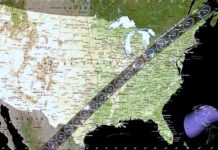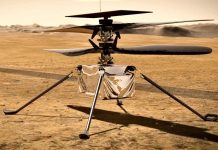
Aug. 23 (UPI) — NASA on Monday released two new images of Jupiter captured by the James Webb Space Telescope.
The images were captured using the telescope’s Near-Infrared Camera, or NIRCam, which uses specialized infrared filters that showcase details of the planet.
“We hadn’t really expected it to be this good, to be honest,” Imke de Pater, a planetary astronomer and professor emerita of the University of California, Berkeley, who helped lead the observations, said in a statement.
“It’s really remarkable that we can see details on Jupiter together with its rings, tiny satellites and even galaxies in one image.”
The first image provides a standalone view of Jupiter, created from a composite of several images captured by Webb, showcasing auroras that extend to high altitudes above the planet’s northern and southern poles using a filter that is mapped to redder colors.
Another filter, mapped to blues, highlights light reflected from a deeper main cloud and makes the Great Red Spot, a powerful storm on the planet, appear white.
The second image offers a wide-field view that shows off Jupiter’s faint rings while “fuzzy spots” that are likely other galaxies make an appearance in the lower background.
“This one image sums up the science of our Jupiter system program, which studies the dynamics and chemistry of Jupiter itself, its rings and its satellite system,” said Thierry Fouchet, a professor at the Paris Observatory, who also helped lead the observations.
Last month, NASA released the first images from the James Webb Space Telescope, the $10 billion successor to the Hubble Space Telescope, which NASA has hailed as “the world’s largest and most powerful space telescope” ever launched.
The images were captured as part of a joint venture by NASA, the Canadian Space Agency and the European Space Agency.






